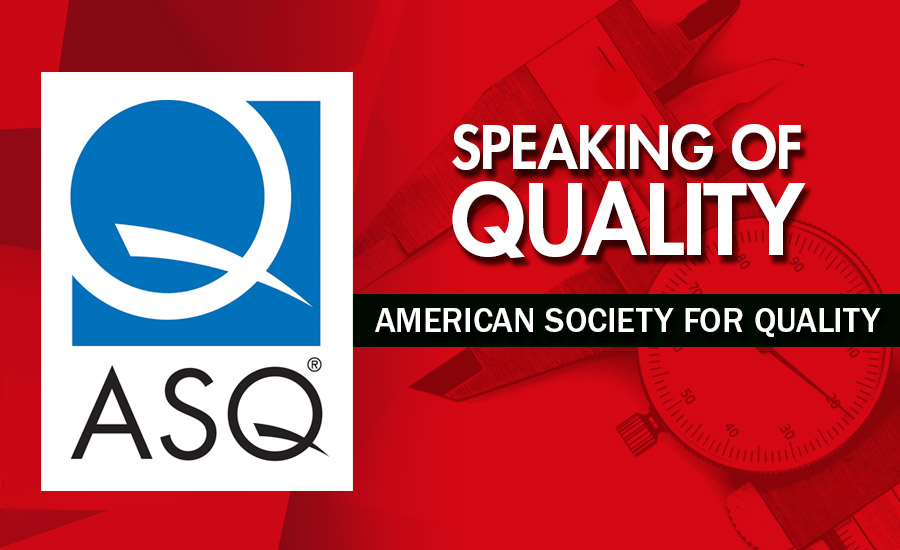Many companies have established incoming inspection to measure, evaluate, or audit purchased components and raw material to ensure conformance to quality standards and performance requirements. Incoming inspection serves an important function within an organization. This appraisal process distinguishes suspect and nonconforming lots from conforming lots. However, many companies fall short of establishing an optimal incoming inspection process. They spend more money than is necessary to ensure the conformance of purchased components and raw material.
Throughout my career as a supplier quality engineer and quality manager, I have uncovered significant waste in the incoming inspection process. The objective of this article is to share ten ideas of where to look for waste in your own incoming inspection process. Ideas will be presented that enable readers to build and sustain a culture of quality within their incoming inspection process, while reducing the overall cost of quality.
- Drawing standards must be robust. If procedures/guidelines for establishing critical quality attributes (CQAs) are not clearly established, there will be inconsistencies in how engineers designate CQAs. When CQAs are applied to features that are not truly critical, the organization will waste money over the component life verifying the feature.
- Treat the inspection plan as a living document. Add inspection criteria to detect a known defect. Likewise, scale back inspection criteria based on inspection history. Many corporations “set it and forget it” when they determine inspection criteria for new components. Organizations waste money if they use the launch inspection plan over the entire life of the component.
- Share inspection plans with suppliers. Be upfront and honest with suppliers about what features you plan to inspect at incoming inspection. A good supplier will incorporate inspections in their control plan to verify those features. Sharing the inspection criteria will build a sense of teamwork between the customer and the supplier, and drive defect detection upstream to the supplier.
- Adequately qualify components prior to launch. If suppliers are not able to demonstrate minimum capability levels when a part is launched, it is reasonable to expect rejections throughout the product life cycle. Demand capability on all CQAs. Work with suppliers to develop processes until they can demonstrate minimum capability on each of these features. Doing so will prevent future rejections, and all the costs associated with returning suspect nonconforming parts to the supplier.
- Collecting variable data does not add value if your organization fails to analyze that data and take action from it. Variable data is more valuable than attribute data, because it can be analyzed and used proactively to prevent a nonconformance. However, if a company lacks a system to store measurement data, it will not benefit from capturing variable data.
- Understand, in depth, your supplier’s measurement system. Where practical, “accept” based on the supplier measurement data. The supplier is the expert in the type of component they produce. In many instances, they will have a superior measurement system (i.e., equipment that is able to measure more precisely). Use your measurement system to confirm supplier data.
- Ensure only confirmed nonconforming parts are returned to suppliers. Alpha risk, also known as producer’s risk or Type I error, refers to the situation where conforming parts are rejected. Oftentimes suppliers report “no problem found” after analyzing a rejected shipment. Install a double check system where an engineer or senior inspector confirms the out-of-tolerance condition. Doing so will eliminate unnecessary shipping costs, line downtime, and reinspection associated with returning conforming parts to the vendor.
- Praise and appreciate inspectors, but not only for rejections. This lesson touches the human side of quality. If quality management only rewards inspectors for rejecting shipments, inspectors may surmise that they only add value by rejecting. Celebrate the days where zero inspections were found nonconforming. Reinforce the notion that inspectors add value by inspecting the parts, not by the outcome of the inspection.
- Use standard quality terminology to describe inspection status. Avoid using the term “bad” to describe inspection status. Train inspection personnel who have identified a nonconformity to use the term “suspect nonconformance.” After proper review, use the terms “accepted,” “rejected,” or “accepted with deviation” to describe the acceptance status.
- Incoming inspection is to protect the customer, both internal and external customers. This is the fundamental purpose of the incoming inspection process. Reinforce the importance of this purpose. Doing so will create an environment where quality is more than just an activity. It will become part of the organization’s culture.
In conclusion, as supply chains continue to grow increasingly international, optimizing the incoming inspection process is critical to the success of manufacturing organizations. The incoming inspection process detects suspect nonconformities from the supply chain before they impact production, or worse yet, customers. However, many incoming inspection programs are riddled with hidden wastes that do not add value.


